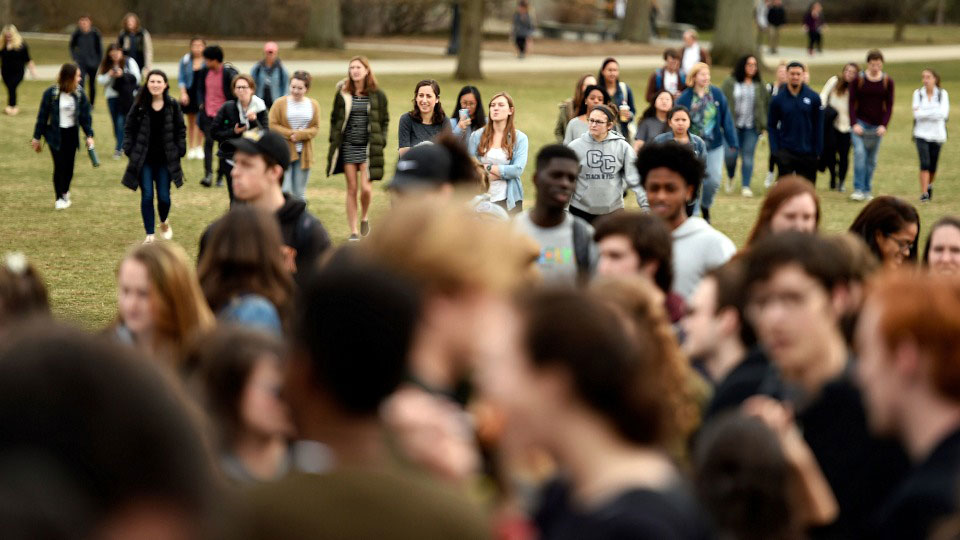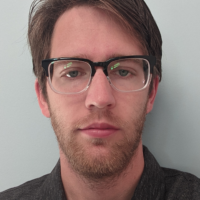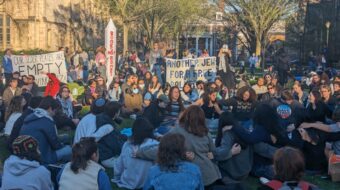
On Jan. 31, 2022, millions of Americans will have to resume payments on their student loans when the moratorium that was part of the CARES Act expires. It can be argued that the impact of all crises is felt locally. With that in mind, we must examine the effect the moratorium’s end will have in our own communities to understand the $2 trillion student loan crisis affecting the nation.
Viewing the student loan crisis through the lens of both Eastern Connecticut’s three community colleges and the way the state’s educational institutions are attempting to respond to this crisis shows that Connecticut is not responding to the interests of the people.
First, it is important to note that any student debt relief is good student debt relief. Any action taken to liberate the oppressed, and open doors of opportunity, should be praised. But those actions should also be analyzed to understand the contribution they make to the overarching goal of building a people- and-planet-first society.
In July this year, because of the ongoing COVID-19 pandemic, Terrence Cheng, president of the Connecticut State Colleges and Universities (CSCU), told residents that CSCU was going to forgive $17 million in debt for 18,161 current and recent community college students. There is no doubt that this action will have a positive impact on the students that qualify, and it should be understood as a modest step in the right direction. But we should not oversell what has been done.
As is often the case with these kinds of announcements, the devil is in the details.
In his announcement, Cheng stated, “By eliminating the debt those students owe to institutions, we are removing a hurdle that prevents far too many people from continuing their educational journey… If an account balance was standing in your way, you can now register for classes”
This statement reveals the limited scope of CSCU’s action and exposes the underlying inequity built into our current borrow-to-learn education model. For many first-generation and low-income students, there are substantial hurdles that prevent them from obtaining an education in the United States. One such hurdle students must clear is their account balance.
Found on the account balance every semester are the various fees that a student must pay prior to being able to register for classes. These fees vary greatly from institution to institution. They can range from library book return fees to textbook costs and meal plans. For many institutions, if a student has an unpaid account balance—no matter how small or trivial—the student is barred from registering for classes the next semester until they find a way to pay. In essence, the student is ousted from their school because they, or their family, cannot pay the up-front money needed to keep their seat in a classroom.
Cheng’s announcement inadvertently exposes a deep crisis in Connecticut’s educational program. His announcement reveals that 18,161 students—up to 20% of CSCU’s current 85,000-student enrollment—cannot continue their education because they cannot clear an economic barrier to entry. If each dollar of the $17 million in relief is divided equally among the targeted students, the implication is that 20% of CSCU’s students cannot afford a $946 expense.
Cheng and the administration are not addressing the structural cause of the student debt crisis, which involves increasing costs and increasing exposure to brutal student loan terms and conditions. Instead, their action is merely reforming one ancillary layer of inequity while leaving the core of exploitation in place.
In Eastern Connecticut, there are three community colleges within the CSCU network that have students who may be qualified for this relief program. Based on the data collected by the Federal Department of Education, roughly 5% of those enrolled students receive federal student loans. This means that the vast majority of students in Eastern Connecticut’s community colleges are either compelled to pay for their education out of pocket or are driven into the cold arms of private lenders.
Even more concerning is the fact that of CSCU Eastern Connecticut community college students who borrow from the federal government, over 60% of borrowers are either no longer able to pay their loans or have found themselves falling behind on their loans because their monthly payments are outpaced by interest rates.
Shockingly, 69% of federal borrowers who graduated from Norwich’s Three Rivers Community College in the last two years are falling behind on their loans because they cannot afford the $93 per month they owe to the Federal Department of Education. Likewise, 66% of Middletown’s Middlesex Community College borrowers could not afford similar monthly payments. Data for Danielson’s Quinebaug Valley Community College is not available.
With the above context in mind, it is startlingly apparent that the solution to the nearly $2 trillion national student debt crisis is not piecemeal tinkering. There needs to be an outright abolition of student debt. This urgent community need has not reached the ears of CSCU’s decision makers, though. This is because the CSCU is not a democratically responsive institution, nor is it designed to respond to the political needs of the people.
CSCU is governed, like other public educational organizations throughout the country, by a board of trustees. These trustees, “members” in Connecticut, sit on The Board of Regents for Higher Education (BOR). The BOR has 21 members. Only 11 of them have actual voting rights that direct policy, and are each appointed by the governor or the Assembly. The remaining 10 non-voting members (ex-officio members in Connecticut) are made up of students, professors, and un-elected commissioners.
Of the 11 voting members, only one attended a community college. Only two are African-American. None are young people or students. In other words, despite what the BOR may say in their bylaws and press releases, the members who actually control the policies of CSCU do not reflect the demographic and working-class nature of the community they govern. It is natural, therefore, for them to not understand the needs of the community they govern.
This insulated body of un-elected decision makers cannot efficiently or practicably address the needs of the community. Connecticut’s BOR and President Cheng may have had good intentions with their July announcement, but it is an action that doesn’t actually address the needs of working-class students.
Education in Connecticut is too expensive. There are too many barriers to entry. Student debt shackles workers to jobs that are exploitative and which they cannot afford to leave. To address the student loan crisis, and the needs of Connecticut’s working class, the BOR must be replaced by democratically-elected student and staff councils.
Political appointees cannot possibly represent the needs of working people because they are insulated by politics, policy, procedure, class, experience, and geography. For the people’s interests to be represented, their institutions must be comprised of the people.
Community College students in Eastern Connecticut and throughout the State of Connecticut are being called to action.
Demand true student debt relief!
Demand full funding of higher education!
Demand an abolition of account balances!
Demand full democratic control over community colleges!
We must agitate for reforms that meet on- and off-campus needs.
As with all op-eds published by People’s World, this article reflects the opinions of its author.












Comments